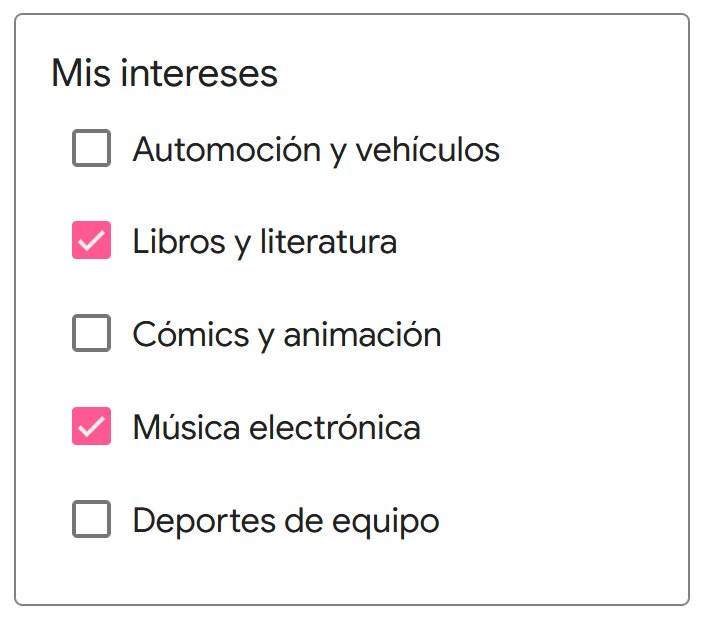TL;DR; — Topics API sustituye a FLoC como la alternativa a las cookies de terceros propuesta por Google
Internet users are increasingly aware of what it means to be browsing and using free applications on our mobiles in terms of privacy.
Users demand, but so do regulations, and it is clear that companies dedicated to marketing and ads must get involved in transforming the mechanics of the sector if they want to continue to have a relevant role and a prosperous business.
It is obvious that Google is the one who is most interested in this, since with the omnipresence of their advertising systems, Chrome and Android are the great producers of ads worldwide.

Table of Contents
What is the Google Privacy Sandbox?
Google started the Privacy Sandbox initiative in August 2019. In it and with the help of the community, it conducts experiments to create a new generation of technologies capable of replacing current tracking mechanisms.
The initiative began with the focus set on searching for these new mechanisms for the web, where the main tracking mechanisms are cookies and fingerprints. For this, they received more than 30 proposals, ranging from strengthening the privacy of current cookies (with the change of SameSite cookies, for example), to the generation of new attribution APIs and technologies to replace web tracking systems most used today: cookies and fingerprints.
Android has also recently joined the initiative. Its objective is to limit the possibilities of tracking and data collection on the platform, as well as to replace unique user identifiers, including the Advertising ID: the one that identifies the user to show them relevant ads in applications.
From a legal point of view, Privacy Sandbox is collaborating closely with the Competition and Markets Authority of the United Kingdom (something similar to the CNMC of Spain) since they decided to launch an investigation into Sandbox in 2021. The objective of the collaboration is to ensure that Google’s initiative proposals comply with competition laws, and that publishers can continue to profit from ads while safeguarding the privacy of consumers and web users. The measures agreed with this body will lay the legal foundations for the application of the measures at a global level.
Goodbye flocks, hello interests
FLoC was the proposal with the most hype of those that reached the testing phase. FLoC is the acronym for Federated Learning of Cohorts and, not by chance, it sounds like flock. This is a substitute for cookies that generates a group of users with similar interests based on their browsing histories. This group would have a unique name and according to Google’s proposal, it would be sent through Chrome as an HTTP header in all communications.
This peculiarity generated many detractors (1, 2, 3, 4, 5, to give some examples) of this technology, since in practice it means indiscriminately issuing an identifier with potentially sensitive information. As they say in this EFF article, it is like having “a tattoo on your digital forehead that shows a summary of who you are, what your interests are, what places you visit, what you buy and with whom you interact“.
Google’s federated learning technology was initially going to be used with this purpose, but as the experiment progressed it was discarded because the devices themselves offered sufficient computational power to calculate the cohorts and this option offered more privacy.
Now Google has decided to stop the development of FLoC. At the end of January 2022, Google announced a reorganization of the calendar to postpone the replacement of tracking based on third-party cookies in Chrome until the end of 2023, mainly caused by the replacement of FLoC with Topics API.

Topics: a quick explanation
Topics is Google’s new proposal that stems from the experience and feedback received in the last two years and is mainly based on the idea of segmentation by interests that we have seen since the origins of online marketing.
With Topics, the browser would determine a series of weekly interests (or topics) based on browsing history, and store them for 3 weeks. The selection of these interests would happen internally in the browser and would never involve consulting external servers (including those of Google).
When a user visits a website that requires the display of personalized ads, 3 interests (one for each of the last three weeks) would be automatically and randomly chosen to share anonymously with ad services. Chrome would provide a control panel for the consultation and management of interests, as well as their complete deactivation.
Topics currently has a preliminary advertising taxonomy of some 350 interests, chosen to exclude sensitive categorizations such as gender or race. The goal for the taxonomy is for it to be managed by an independent body that incorporates feedback and ideas from all industry players.
At the moment, the proposal is to obtain the topics of a website automatically. The question is whether a site should be able to establish its own topics or if that would open the door to a possible destabilization of the algorithm. What does seem to be possible is the prohibition of the calculation of topics on a website using a header similar to Permissions-Policy: browsing-topics=().
You can consult both the list of interests and all the technical details and issues that are still to be defined about the proposal in this repo.
